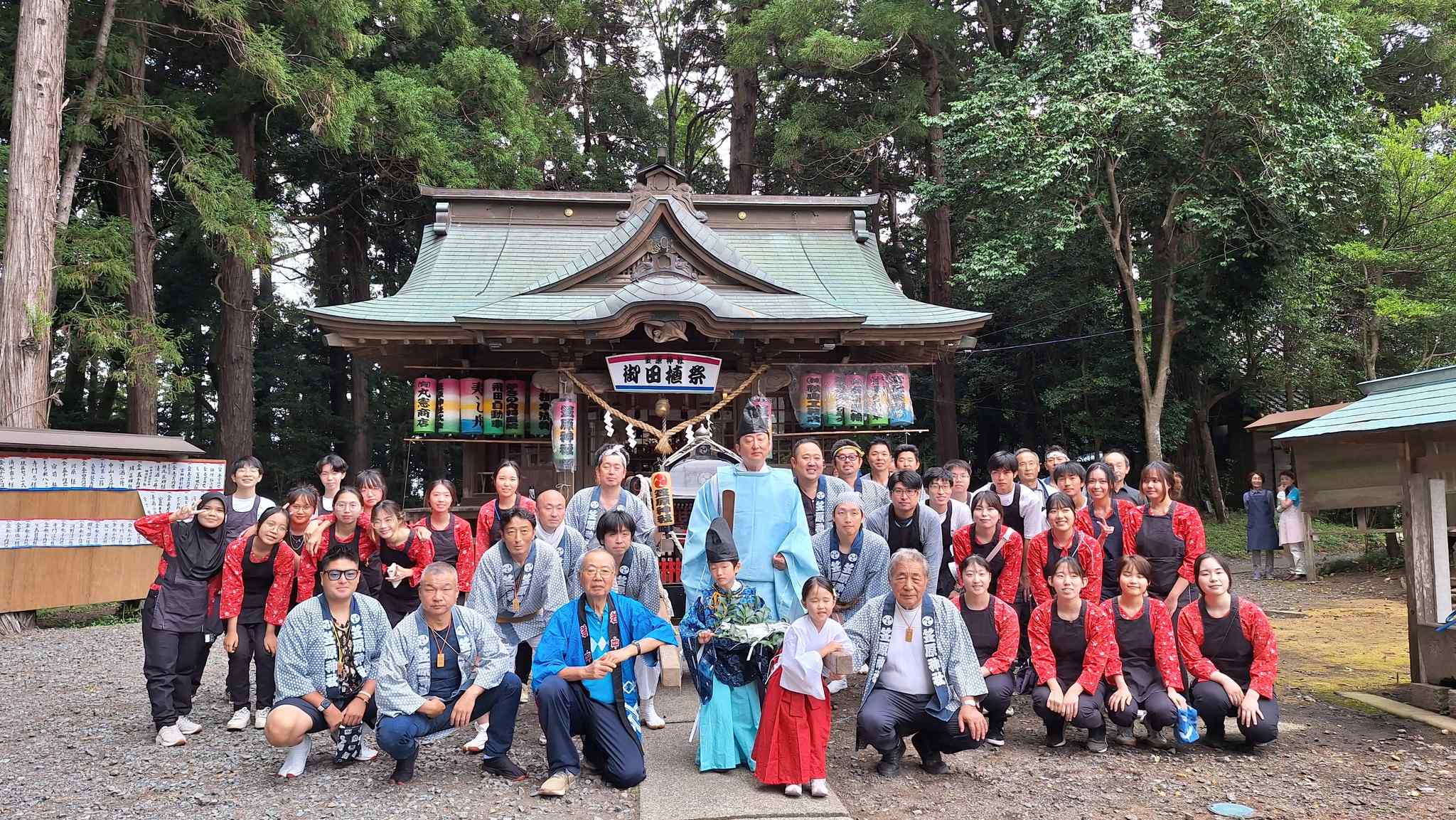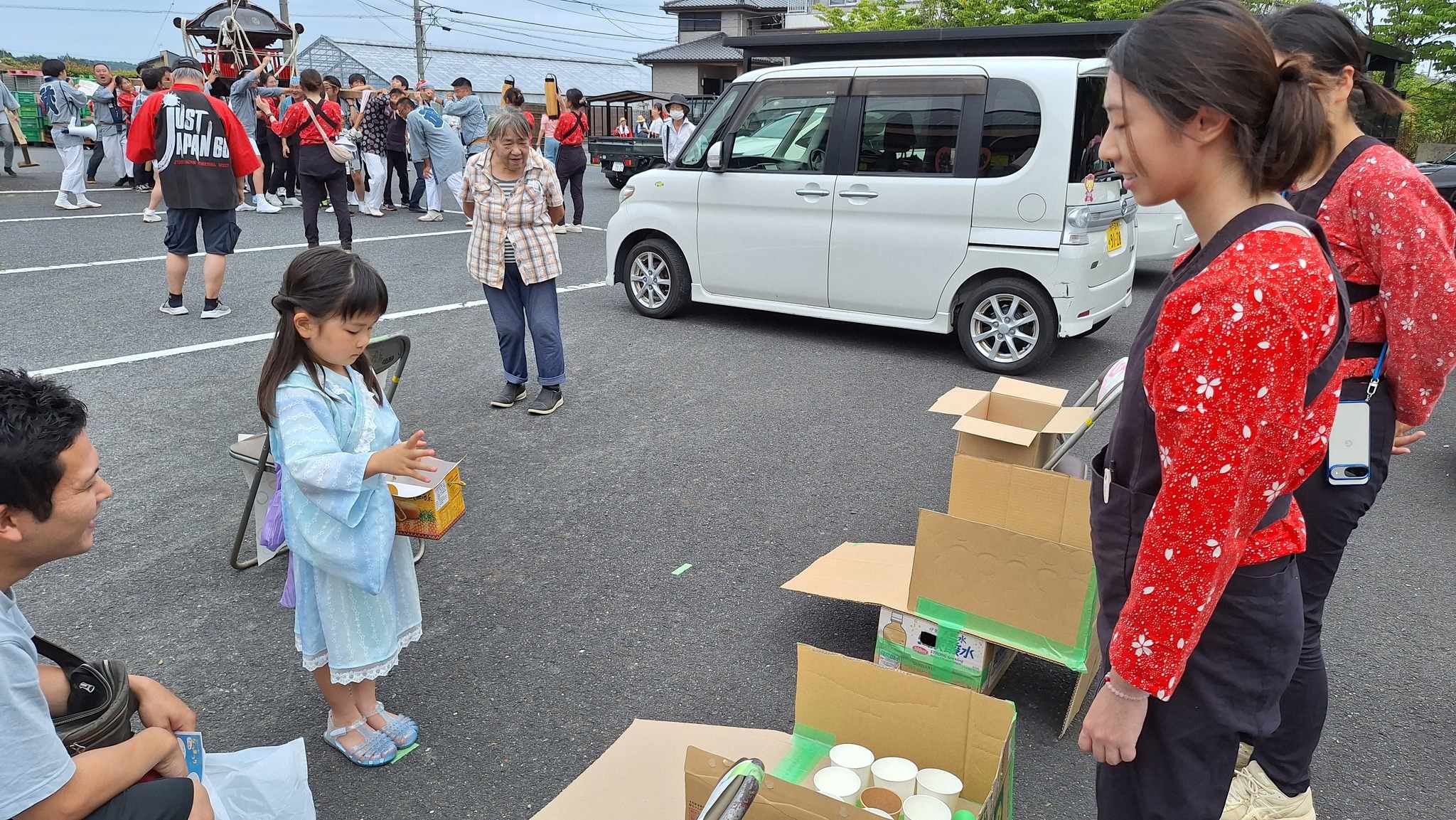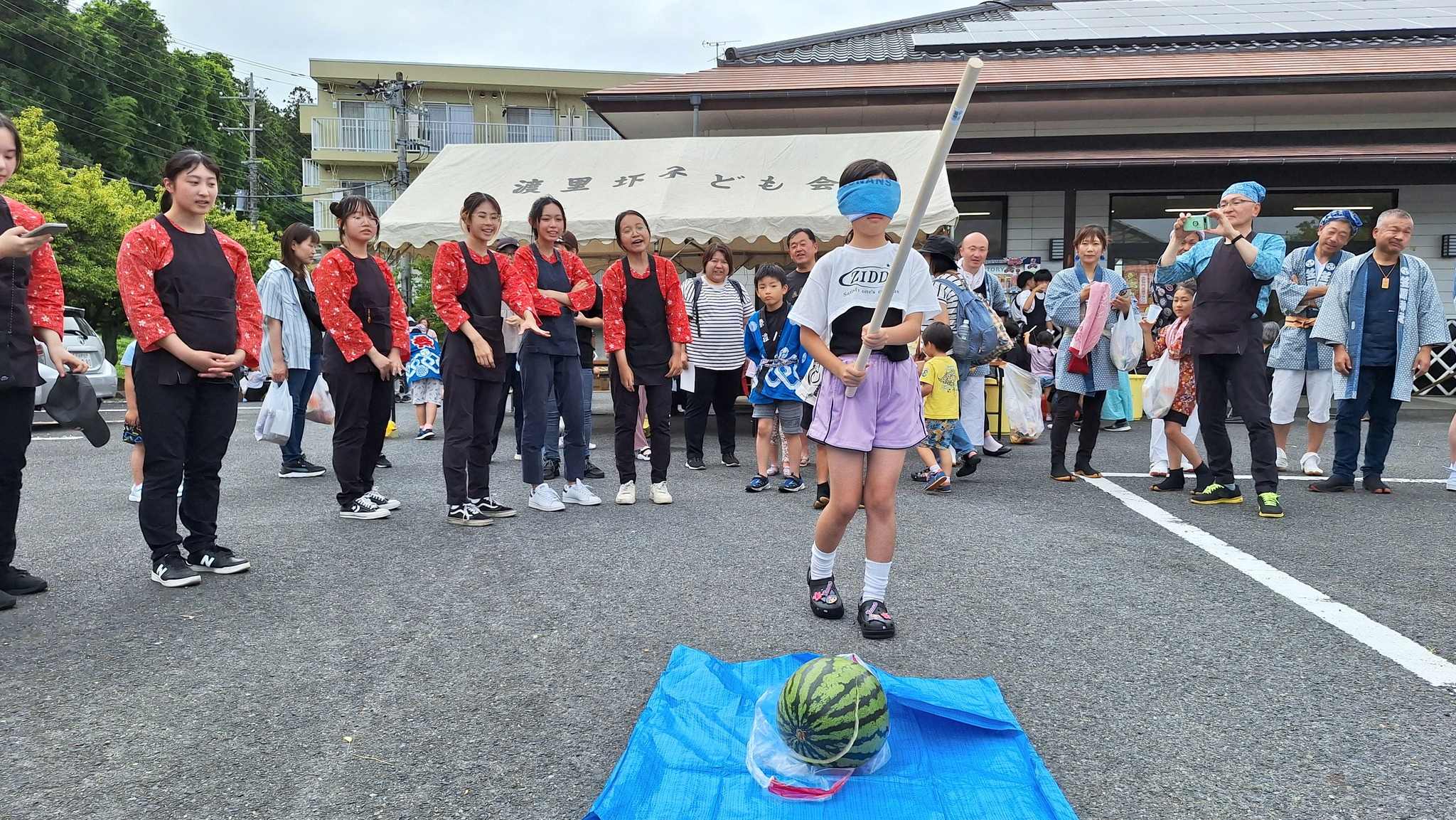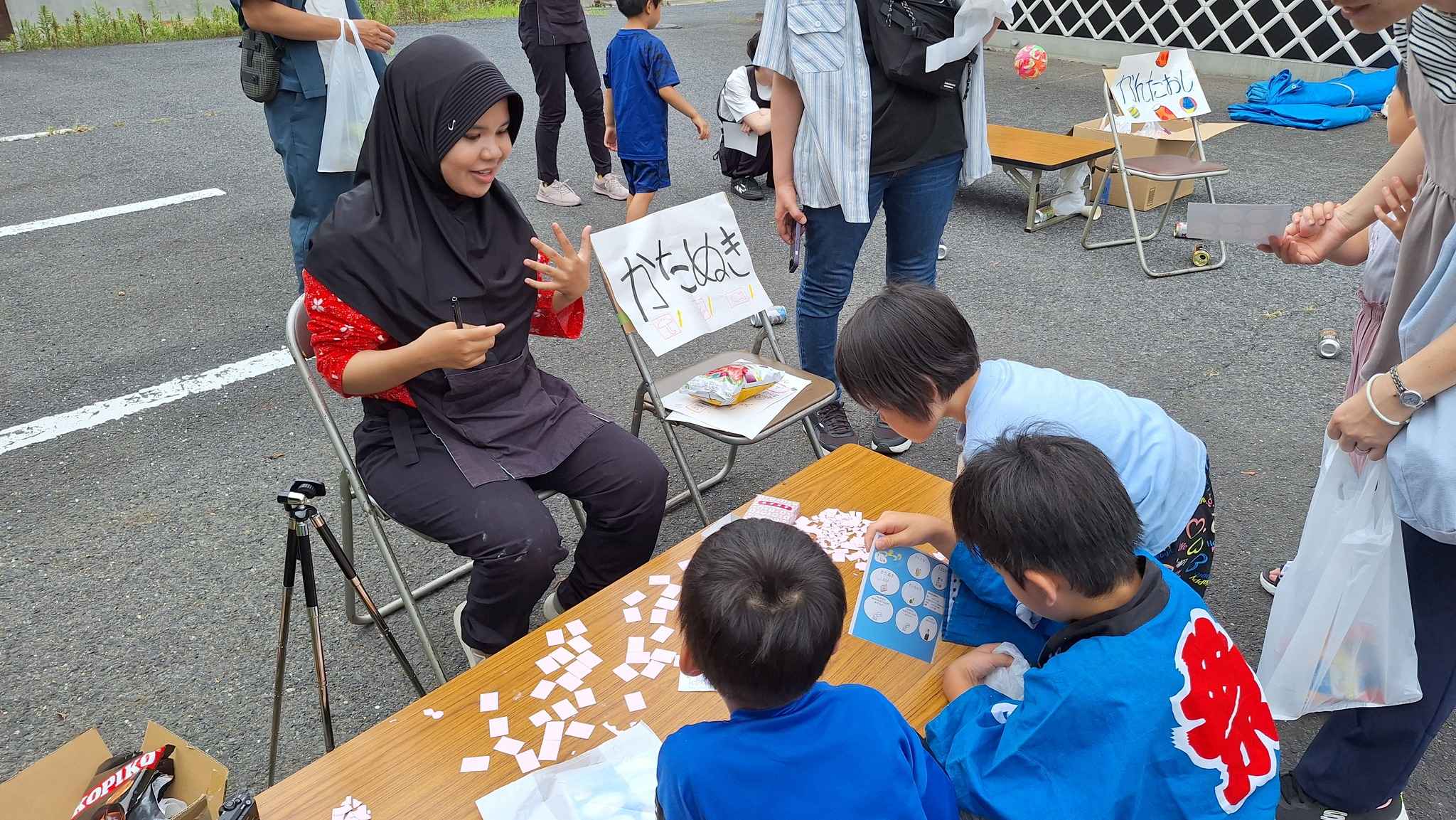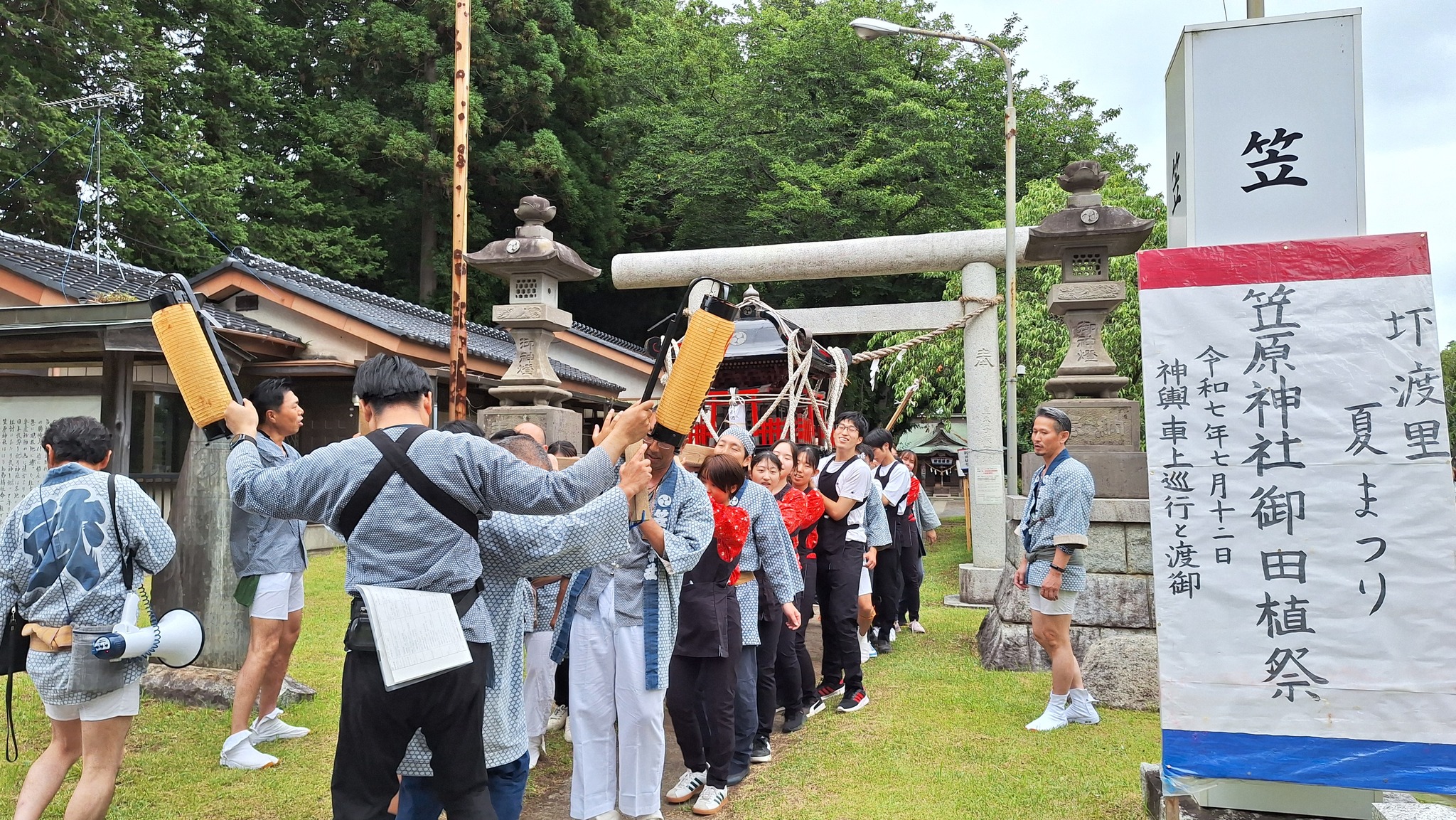
New information
Joining a Local Summer Festival! Cultural Exchange and Community Experience at the Kasahara Shrine Rice Planting Festival and Akutsuwatari Summer Festival(Saturday, July 12)
On Saturday, July 12, 2025, a group of 20 students—including 14 enrolled in the ”Japanese Pop Culture B” class (10 of whom are international students) and 6 additional volunteers (including 1 international student)—participated in the Kasahara Shrine Rice Planting Festival and Akutsuwatari Summer Festival, held behind the Ibaraki University Mito Campus.
This initiative began last year, thanks to an invitation from Mr. Hirofumi Nemoto, a local resident and the chairman of the Ibaraki International Association. He encouraged international students to experience a traditional Japanese festival. While last year’s participation was limited to carrying the mikoshi (portable shrine), this year the students took a more active role by organizing a “Summer Festival by Ibaraki University Students,” aiming to deepen their interaction with the local community.
Initially, the students planned to offer typical Japanese festival games such as super ball scooping and yo-yo fishing. However, as discussions progressed, students expressed interest in trying suikawari (watermelon splitting) and katanuki (traditional candy molds), inspired by scenes from anime. Interestingly, even some Japanese students had never tried katanuki, highlighting the cultural diversity within Japan itself.
As students shared stories about festival games from their own countries, they discovered that similar games exist around the world, often with unique local rules. After much discussion, they decided to offer two games—can knockdown and a ping-pong toss—that would be easy for local children to enjoy.
Thanks to flyers distributed to local households and posted at the community center, the event drew about 35 children—far more than the originally expected 20. The children’s joyful participation left a strong impression on everyone involved.
To encourage interaction, the students also prepared a “task sheet” for the children. In addition to completing all the games, the children were asked to greet the international students in their native languages. This simple activity naturally sparked conversations and helped foster meaningful exchanges between the students and local families.
And of course, the students also joined in carrying the mikoshi!
Wearing traditional happi coats, they shouted “Seiya! Seiya!” in unison with local participants as they carried the heavy shrine. Though many found it more physically demanding than expected, they worked together with great energy and determination, eventually carrying the mikoshi all the way up to the hill where the university is located. Some international students, unable to lift the mikoshi onto their shoulders due to height differences, supported it with their hands and still found it very heavy. Yet they shared how the chants gave them strength and how inspired they were by the older participants who carried the mikoshi with such enthusiasm.
Students shared a variety of reflections on their experiences through the festival.
Japanese students commented,
“It was fun to be part of the circle of local people who worked together to create the festival. I don’t usually get much physical activity, so I was really tired—but it was such a fun and valuable experience.”
International students shared that they were happy to see how much the children enjoyed the games they had prepared, especially suikawari. Others noted cultural differences, such as how in Taiwan, only men affiliated with temples are allowed to carry the mikoshi, whereas in Japan, anyone—including women and children—can participate. Some expressed a desire to learn more about the movements and meanings behind the mikoshi tradition.
These voices reflect how students not only experienced Japanese culture firsthand but also gained new insights through their interactions with the local community. For each participant, this was a memorable and meaningful experience—one that will surely influence their future learning and engagement with the region.
